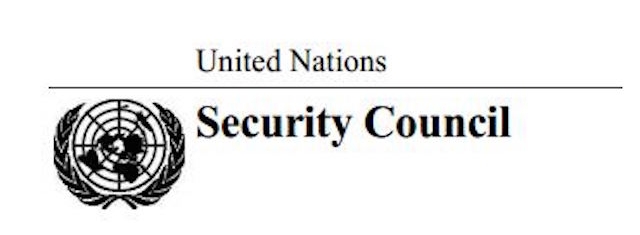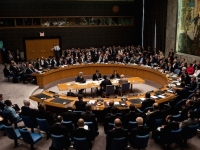Miscellaneous
THE UNITED NATIONS SECURITY COUNCIL HAS 5 PERMANENT MEMBERS TO MAINTAIN PEACE
AND 10 NON PERMANENT MEMBERS

United Nations Security Council (Source: Courtesy of UN )
USPA NEWS -
The Security Council held its first session on 17 January 1946 at Church House, Westminster. Since its first meeting, the Security Council has taken permanent residence at the United Nations Headquarters in New York.The Council is composed of 15 Members, 5 are permanent and the rest non permanent.
THE HISTORIC OF UNITED NATIONS SECURITY COUNCIL ----------------------------------------------------------------------
The Security Council held its first session on 17 January 1946 at Church House, Westminster, London. Since its first meeting, the Security Council has taken permanent residence at the United Nations Headquarters in New York City. It also travelled to many cities, holding sessions in Addis Ababa, Ethiopia, in 1972, in Panama City, Panama, and in Geneva, Switzerland, in 1990. A representative of each of its members must be present at all times at UN Headquarters so that the Security Council can meet at any time as the need arises. Permanent and Non-Permanent Members The Council is composed of 15 Members:
five permanent members: China, France, Russian Federation, the United Kingdom, and the United States,
and ten non-permanent members elected for two-year terms by the General Assembly (with end of term date):
Angola (2016)
Chad (2015)
Chile (2015)
Jordan (2015)
Lithuania (2015)
Malaysia (2016)
New Zealand (2016)
Nigeria (2015)
Spain (2016)
Venezuela (Bolivarian Republic of) (2016)
NON - COUNCIL MEMBER STATES-------------------------------------------------------------------------------------------------------
More than 60 United Nations Member States have never been Members of the Security Council.
A State which is a Member of the United Nations but not of the Security Council may participate, without a vote, in its discussions when the Council considers that that country's interests are affected. Both Members and non-members of the United Nations, if they are parties to a dispute being considered by the Council, may be invited to take part, without a vote, in the Council's discussions; the Council sets the conditions for participation by a non-member State.
AIM OF THE COUNCIL IS TO MAINTAIN PEACE AND SECURITY---------------------------------------------------------------
When a complaint concerning a threat to peace is brought before it, the Council´s first action is usually to recommend that the parties try to reach agreement by peaceful means. The Council may:
set forth principles for such an agreement;
undertake investigation and mediation, in some cases;
dispatch a mission;
appoint special envoys; or
request the Secretary-General to use his good offices to achieve a pacific settlement of the dispute.
When a dispute leads to hostilities, the Council´s primary concern is to bring them to an end as soon as possible. In that case, the Council may:
issue ceasefire directives that can help prevent an escalation of the conflict;
dispatch military observers or a peacekeeping force to help reduce tensions, separate opposing forces and establish a calm in which peaceful settlements may be sought.
Beyond this, the Council may opt for enforcement measures, including:
economic sanctions, arms embargoes, financial penalties and restrictions, and travel bans;
severance of diplomatic relations;
blockade;
or even collective military action.
A chief concern is to focus action on those responsible for the policies or practices condemned by the international community, while minimizing the impact of the measures taken on other parts of the population and economy.
Rahma Sophia Rachdi Liberte Egalite Fraternite Black Friday Congress Versailles Resolution 2249 Security Council United Nations President Hollande Stade De France Bataclan Attack Terrorism
Liability for this article lies with the author, who also holds the copyright. Editorial content from USPA may be quoted on other websites as long as the quote comprises no more than 5% of the entire text, is marked as such and the source is named (via hyperlink).







